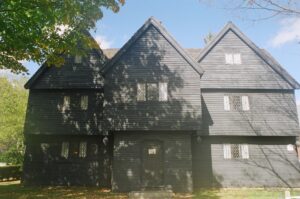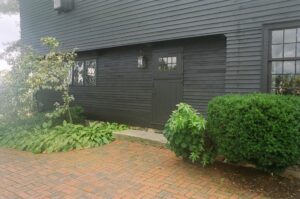The second story in the Willow’s Moon Song series is “Harvest Grove : In the Year of the Comet 2230”
Story Teaser: Turmoil has swirled around Casey’s head since childhood. It would bubble over in hints from stories written, or from sketches of images dreamed. What was being suppressed so strongly? This last sketch of the little girl in a puritan like outfit haunted Casey day and night. Those dark eyes had to hold the key. Who could help solve this puzzle? Miss Moon of the Willow Library could, but instead, she sends Casey over an old New England covered bridge on All Hallow’s Eve, when the spirits are thought to come out and play. Will this help unlock the mystery for Casey and unleash a power that lays latent, or cause insanity? Keep your flashlight handy, and your Jack-O-Lantern lit as you dive into this fast-paced gender bending paranormal novella. Anything can happen on Halloween! Comments from Readers: “Wow, I never expected that twist in the story!”, “Great Halloween story.”, “Oh, my!”
“Harvest Grove” is also the origin story for Casey Youngblood, one of my favorite and most complicated characters in the Willow’s Moon Song universe. I guess I shouldn’t be surprised the research for the story would be as complicated and fun.
I confess, I really don’t know how the story popped in my head. But then again, I rarely can explain where the storylines for my stories come from. I would guess for this story, it all started with my fascination from childhood with New England covered bridges.
Crossing back in time: My research on covered bridges for this story was actually easy. I have collected pictures of them since I was a teen and visited everyone I came close to, and still do.
They are beautiful on the outside and for me as a kid, rather spooky inside. Yes, I said spooky. Here is why; the temperature drops as soon as you step inside. The framework of the crisscrossing wood struts made me think of giant wood spider webs. It can be dark inside them, and there are usually holes in the flooring that you can peer down at the rushing stream below. Also, sounds echo loud, footsteps, car wheels over the planks, and horses clomps. They are usually pretty old, so there are birds, bats, and little creatures taking refuge in them. What a perfect combination to imagine something spooky, dark or otherworldly happening when you step inside or cross over through it. Now you can understand how the idea of the bridge becoming a supernatural portal blossomed in my head.
Living back in time: Gathering research for the 1600-1700 time period in Massachusetts was really enjoyable for me. Being a life long history nut, I had already visited many old antique homes, and I also have family history artifacts to draw on. Three of my favorite places in Massachusetts to visit old homes are Plimouth Village, Sturbridge Village , Old Deerfield Village, and who can resist “a witch house” in Salem.


While visiting these homes I took note of the layout, height of ceilings, and colors of the walls and wood. What would I see from sitting in a chair or sitting at the table? Would the fire from the hearth warm me? How would I get from room to room? Placing oneself in the shoes of the characters will give the story a more authentic feel, and will also educate those who have never been in these places as to what it is like. And for me, it fuels my imagination to be “there”.
The story also references Native-Americans who lived during that time frame in rural Massachusetts. I needed to be authentic when I wrote about how they lived and how they might have been treated by the English. This led me down a rabbit hole of research. I had to weed through what was legend and what was fact. It was not easy. Thankfully I did find good resources. I also visited the Mashantucket Pequot Museum and Research Center in CT. and Plimouth Patuxet Museum with its recreated and living Native-American village where I was able to speak to a historian about rites of passage rituals for teenaged boys.

Writing back in tyme: For the journal in the book, I had to think about how the character would spell her words. In that time period spelling was not standardized. If you read journals, official papers, and even gravestones, you will see a wide variety of spelling. They just spelled words as they sounded. And they may have abbreviated or changed letters for others. I love reading old letters and gravestones and try and translate them. Taking all that into account I fashioned the journal writing to match.
Writing about folklore, myths, and more: Again, easy! I can not get enough of old Irish/Celtic folklore. I love devouring old musty books about the tales of the Fae Folk. I made note of the similar beliefs about their powers and how to attract or ward them off. There are also tales of traveling between realms and how time can be altered. This ability especially came into play during the ancient Celtic festival of Samhain. (Our Halloween spins off from this fire festival.) It was held around November 1st. It ran from sunset to sunset, or some texts say lasted three days. It was believed to be the time when the curtain between the afterlife and the present day was the most thin
All of the folklore tidbits I have acquired will work their way into other books in the Willow’s Moon Song series. Keep an eye out for them! They might just come in handy next time you wander upon a stranger while walking out in the woods!
Writing about Witches: It has been a multi-generational belief that one of our ancestors was hung as a witch back in the day. I haven’t found the real reference yet, but I wouldn’t be surprised. I do have many first hand accounts of the spunky independent women in my family tree. When you dive into the real stories of the women who were accused as witches, certain attributes stick out; they were women who spoke their mind, who were successful as single women or widows, women with possibly mental illness, women who were healers and midwives, or just a poor old lady with no one to speak up in her defense. In my fiction and my art, you won’t find any witches represented as evil ugly hags. They will always be presented as healers and strong independent people.
Writing while sitting upon a wall: When the first farmers came to New England, they had to clear the land of timber to build homes and barns, for firewood, and to plant crops. This caused them to dig up numerous scattered rocks that New England is notorious for. Not wanting to cart them that far, they turned them into stonewalls. Because stone does not rot like wood does, these stonewalls persist centuries after that farmer placed them. I love taking a walk in the woods and finding remnants of them. The farmland is long overgrown, but you still see the “fences” snaking through the forest giving it a haunted feeling.
In summary: I adore New England in the fall, and all the spooky tales around Halloween. “Harvest Grove” grew out of that love and the ideas it planted in me when visiting the covered bridges, the pumpkin patches, walking along the old stone walls, or when sitting by a campfire letting my mind wander like the sparks dancing up toward the stars.
Now that you know the inspirations, I hope you will enjoy reading “Harvest Grove” and all the other books in the Willow’s Moon Song series.
Atwood
A follow up to “Harvest Grove” will be forthcoming in the book “Oak Ridge Shadows”
This article is copyright © Atwood/N.A.M. 2022, 2024. All content and images are copyrighted unless otherwise noted. Please do not use it in any form without request of the author. Links to our articles, short quotes with credit, and associated links are allowed.
For more spooky good times, check out this article on finding and reading old gravestones.
http://maplewoodpress.com/field-guide-to-early-american-gravestones-in-new-england/







